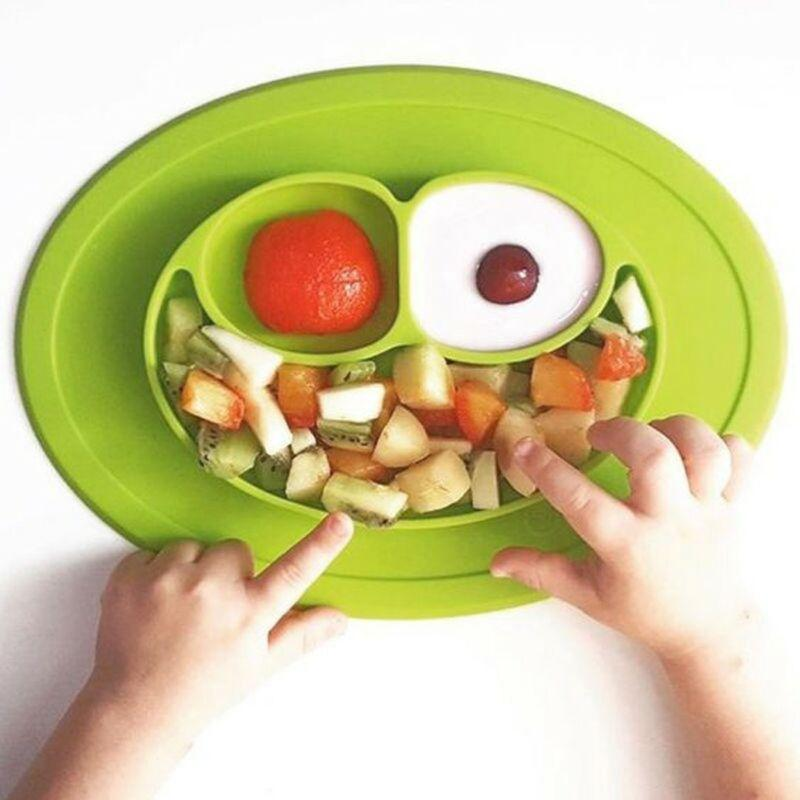Baby fidgety when feeding
Why is My Baby so Fidgety?
We’re supported by moms. When you buy through links on our site, As an Amazon Associate, I may earn a commission.
My son was a very fidgety baby for the first 4-6 months. I asked other mothers with new babies if they experienced the same thing and most did not. I’ve had three children and have been around numerous other children and never seen any of them be nearly as fidgety as my son. He was so fidgety that I wondered if something was wrong.
View in gallery
He seemed to always be moving and jerking around and very rarely did I see him lay still. While awake or while sleeping, he would constantly move his head side to side and kick his legs. I was worried that he wasn’t getting enough sleep since he would wake up every 30-45 minutes.
As far as I could tell, there wasn’t anything wrong with my son. His health was good, he met all of his growth milestones and he didn’t cry too much. He just seemed to have a lot of energy and always wanted to be moving around.
This was pretty tough to deal with when he was really young and was sleeping with me. I’d have to pull a bassinet over close to the bed and lay him down in there just so we could both get some sleep. It kept occurring and so I started to Google about why a baby might be fidgety.
I had to read articles in quite a few places and scour parenting/mother forums to piece together exactly what being fidgety meant and why it might be happening.
I’ll share my findings and hopefully, it will put your mind at ease.
Table of Contents
- 1 What are the signs that your baby is Fidgety?
- 2 Is something wrong? Should I be worried? Is all the fidgeting normal?
- 3 Why is my baby so fidgety at night or when breastfeeding?
- 4 Acid Reflux, Colic, and Gas lead to Fidgeting
- 5 How to Relieve Baby Gas
What are the signs that your baby is Fidgety?
Babies can display many different actions and behaviors that could be considered “fidgety”. Many of these are normal and nothing to worry about. Some may be things you’ll want to take action on to avoid discomfort for your baby. Here are some common behaviors that may seem like fidgeting:
Many of these are normal and nothing to worry about. Some may be things you’ll want to take action on to avoid discomfort for your baby. Here are some common behaviors that may seem like fidgeting:
- Moving head side to side repeatedly
- Flailing arms
- Kicking legs
- Shorter than average naps or waking up often
- Sudden jerking motions sometimes while sleeping
Is something wrong? Should I be worried? Is all the fidgeting normal?
These are the questions I asked myself many times and I’m sure you’re asking yourself right now if you’re here reading this. The good news is, often this is normal and there is nothing to be worried about. This is very common, especially in the first 6 months. At my sons 2 month checkup, I asked his pediatrician about all the fidgeting. He suggested that my son may be having issues with gas or even reflux. Both of which are easy to take care of with drops or by extra burping. He also told me that some babies are just more fidgeting then others. Some are a little fidgeting and some are really fidgety. Usually, this is a phase and you’ll get past it.
Some are a little fidgeting and some are really fidgety. Usually, this is a phase and you’ll get past it.
Why is my baby so fidgety at night or when breastfeeding?
Is breastfeeding painful, difficult or highly unpleasant? With my son, nursing was becoming really annoying and frustrating (let’s be honest, painful). He would not settle down. He was constantly on and off the breast, squirming around, playing with my bra, scratching me up and down. I’d try to swaddle him but he would just start crying until I let him be free again. This is one of the reasons why I weaned him and got on a bottle after 5 or 6 months. I couldn’t handle it anymore.
One of the most common causes of fidgeting at night or when breastfeeding is gas. Yep, you read that right, it’s simply the baby being gassy. Try burping them some more and if that doesn’t help, try some gas drops. Gripe water worked wonders for us as my son often had gas issues. You can also speak to your pediatrician but they will most likely suggest the same things.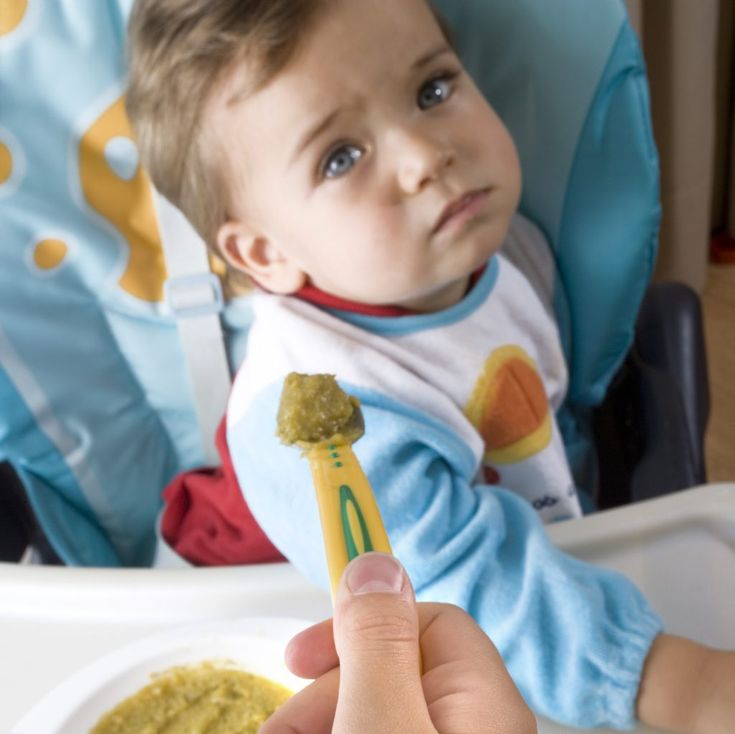
View in gallery
Acid Reflux, Colic, and Gas lead to Fidgeting
The main three causes of fidgeting are acid reflux, colic, and gas in the tummy. You may notice that your baby fidgets more or cries when laying on their back. This is a sign that these may be the culprit. You’ll always want to get advice from your pediatrician to be sure and he or she will be able to recommend the appropriate response could include a change to feeding or medication. If you suspect gas, extra burping, gripe water or other baby gas relief medications can be tried. Some parents have also had success doing baby bicycles (lay baby on his back and gently cycle his legs in a circular motion) and increasing tummy time.
How to Relieve Baby Gas
One of the most common ailments for newborns and babies 1-6 months old is gas. It can be uncomfortable and downright painful. If your baby cries after feeding, often it can be because of gas. There are several ways to get rid of your baby’s gas fast. They are as follows:
They are as follows:
- Try burping your baby twice. A lot of discomfort can be caused by gulping down air during feeding.
- Try to avoid the issue of gulping air by feeding your baby upright to cut down on swallowed air.
- Try using baby gripe water. We used this with my son and it worked wonders. This can often offer relief and soothe babies. We recommend the Mommy’s Bliss brand.
- Be aware of your diet. Some foods you eat may be passed on through breast milk and could be attributed to the gas. (some foods that may cause gas are caffeine, onions, spicy food, and dairy products)
- Think about trying different formulas. Some claim to cause less gassiness.
It’s hard to see our little ones in pain. You just want to trade places with them and you’d do anything to make it go away. Just stay calm, pay attention to their behavior and don’t be afraid to contact a doctor or nurse for advice. Often times this will pass quickly and is related to gas, but if it’s not you’ll want to try some of the remedies I discussed above or get help. Good luck!
Good luck!
This content is not intended to be a substitute for professional medical advice, diagnosis, or treatment. Always seek the advice of your physician or other qualified health care provider with any questions you may have regarding a medical condition.
Lorie Anderson, M.S.Ed.
Hello, my name is Lorie and I'm a mother of three beautiful kids. I have a masters of science in education, learning design, and technology. I like to share my experiences from raising 3 kids and review products I've found useful.
My baby fusses or cries when breastfeeding
By Kelly Bonyata, BS, IBCLC
© Lsantilli - Fotolia.com
Some babies will fuss, cry or pull off the breast during breastfeeding. There are a number of reasons why this might be happening. It’s pretty common to see this type of behavior at around 6-8 weeks, though it can occur at any time. If your baby is generally fussy (not just when nursing) see My baby is fussy! Is something wrong?
Determining the problem
Here are some of the problem-solving steps I go through when my baby is fussy at the breast or a mother asks me why her baby is fussing while breastfeeding:
Now infants can get
all their vitamin D
from their mothers’ milk;
no drops needed with
our sponsor's
TheraNatal Lactation Complete
by THERALOGIX. Use PRC code “KELLY” for a special discount!
Use PRC code “KELLY” for a special discount!
How old is baby? Most babies go through growth spurts during the first few days at home and around 7-10 days, 2-3 weeks, 4-6 weeks, 3 months, 4 months, 6 months, 9 months, etc. Many babies are fussy during growth spurts.
Is baby working on anything new developmentally? Babies who are starting to notice the world around them can be notoriously distractible. Any kind of new developmental step that baby is working on can affect nursing temporarily, whether it be fussy nursing behavior or simply more frequent nursing.
When is baby fussing? To figure out the cause it’s helpful to pay attention to when the fussy behavior happens, both during the nursing session and during the day.
If baby is fussy right when your milk is letting down (or immediately after), there’s a good chance that the fussy nursing is related to a fast let-down. If baby is fussy before let-down, or a few minutes into nursing (and a while after let-down), then baby may be impatient for the fast flow of milk that comes with let-down.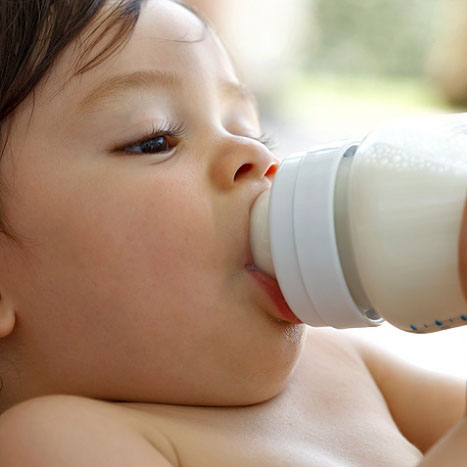 Fussing at the end of a nursing session (or what seems to be the end) may mean that baby needs to burp, or is ready to finish nursing, or just wants to suck (and doesn’t want to deal with a new let-down at this point), or wants to continue nursing on the other side or with a faster flow of milk.
Fussing at the end of a nursing session (or what seems to be the end) may mean that baby needs to burp, or is ready to finish nursing, or just wants to suck (and doesn’t want to deal with a new let-down at this point), or wants to continue nursing on the other side or with a faster flow of milk.
If the fussy behavior is mainly in the mornings, it might be due to a faster than usual let-down if baby has just had a longer sleep period and mom’s breasts are fuller than usual. If baby is fussier during evening nursings, it may be due to the normal fussy time that most babies have during the evening. Although most babies don’t react to foods that mom eats, some do. If you eat a particular food at about the same time each day (or most days) and baby has a regular time where she fusses during nursing, try not eating that food for a week or two to see if things improve.
Does fussing occur on both sides equally or only on one side? Most moms have a faster let-down and/or a more abundant milk supply on one side than the other, so if your baby fusses more on one side, it may be due to these differences.
What else is going on with baby? Is she sick or teething? Is something new or different going on in her environment? Has she started solids or is she trying a new food? Is she exhibiting other symptoms besides the fussy nursing?
Below are discussions of some of the different things that can lead to fussy nursing behavior. Keep in mind that the problem may also be a combination of several things.
Does baby need to burp?
Many babies will cry, fuss, pull off the breast, etc. if they need to burp. Try to burp between breasts and after a feeding, but don’t worry if baby does not burp and is content. Breastfed babies overall don’t take in as much air during a feeding as bottle-fed babies do, so usually don’t need to burp as often. If baby has been crying before she nurses, or is so hungry that she nurses “frantically” or if mom has a fast let-down, baby could be taking in more air and may need to be burped more often.
Burping is usually only necessary during the first few months, though it may extend longer.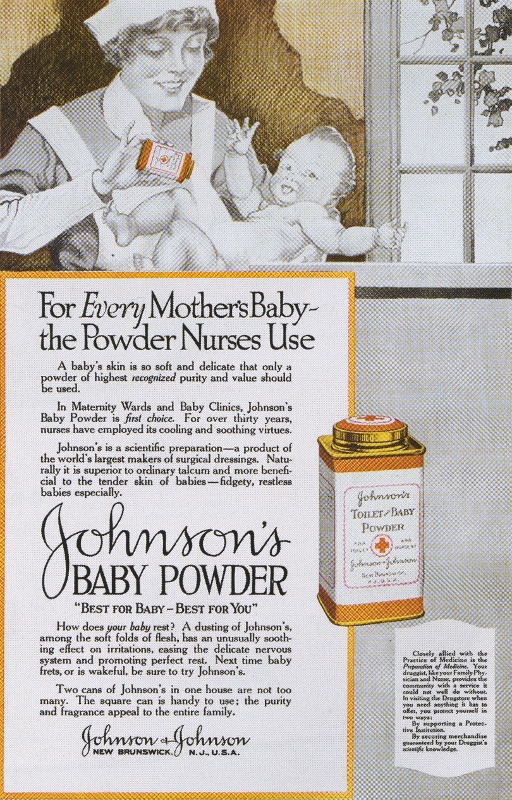 Once your baby is moving more freely, she will be able to relieve the gastric gas herself. This usually will occur between the 4th and 6th month, but may be shorter in some children and longer in others.
Once your baby is moving more freely, she will be able to relieve the gastric gas herself. This usually will occur between the 4th and 6th month, but may be shorter in some children and longer in others.
If baby has a hard time burping, try burping more often during a feeding. The best burping position is one that applies firm pressure to the baby’s tummy. Placing baby over the shoulder way up so that there is pressure on baby’s abdomen often works well. Walking around while doing this might distract her long enough to get a good burp. You may even want to lie baby down on her stomach and burp her that way.
Growth spurt
Babies often pull off and fuss during growth spurts. Most babies go through growth spurts, sometimes called frequency days, during the first few days at home and around 7-10 days, 2-3 weeks, 4-6 weeks, 3 months, 4 months, 6 months and 9 months (more or less). More growth spurt information in this link.
Distractible baby
If baby seems to be pulling off the breast at any distraction (real or imaginary), then see The Distractible Baby.
Forceful let-down
Some babies will pull off the breast soon after let-down if mom has a forceful let-down. Baby may be frustrated by the too-fast flow of milk with let-down. A too-forceful let-down can also cause excessive gas or spitting up/vomiting. There is more information here on symptoms of and how to deal with a fast let-down reflex.
Slow let-down
Some babies get very impatient if mom has a slow let-down. There is more information here on speeding up a slow let-down reflex.
Baby wants a faster milk flow
Even very young babies can be quick to notice that pulling off, kneading the breast, etc. can cause an additional let-down, and can facilitate a faster, easier milk flow. Some babies become impatient with the slower milk flow following the initial fast flow at let-down. This may or may not be related to a slow let-down.
When a feeding begins at the breast there are drops of milk. Then when the initial let-down occurs (several seconds to a minute into the feeding), the milk flow speeds up quite a bit. At that time it may drip very quickly, squirt, or even spray. Some minutes later it slows again and the baby must continue to suck vigorously in order to elicit further let-downs. This pattern can continue through successive, multiple let-downs as long as the baby is continuing to nurse vigorously. Eventually, baby will learn that the flow will pick back up again if she’ll only continue to vigorously suck/swallow.
At that time it may drip very quickly, squirt, or even spray. Some minutes later it slows again and the baby must continue to suck vigorously in order to elicit further let-downs. This pattern can continue through successive, multiple let-downs as long as the baby is continuing to nurse vigorously. Eventually, baby will learn that the flow will pick back up again if she’ll only continue to vigorously suck/swallow.
With bottle feeding, the flow is instant and continuous. The baby is required to work very little. Once a baby has had a bottle, especially a lot of bottles, she may begin to prefer the ease of bottle-feeding over the work of breastfeeding. She may become frustrated at the breast after the first let-down occurs and the flow of milk begins to slow.
If baby is getting bottles you might consider putting them away, at least for a while. When you must use a bottle, only use a newborn nipple for as long as baby will tolerate it so that she never gets a really fast flow of milk from the bottle, but has to work a little more to get the milk.
Sometimes babies of moms with oversupply or fast let-down will also get very used to the fast flow and object when it normally slows somewhere between 3 weeks to 3 months.
It can be helpful to do some breast compression when this fussiness starts or right before you expect it to. This will help speed up the milk flow again. Once compression stops helping, try switching baby to the other side when she begins to fuss and back and forth again (after using compression) as you need to.
Baby is done nursing for the moment
If baby is fussing after she’s been nursing for a while, and you’ve ruled out other causes, she may be in the process of changing her nursing pattern. Babies become very efficient at the breast with growth and maturity. They can milk the breast in a lot less time per feeding session than they required before. Baby’s frustration may just be a sign that she’s finished and wants to move on.
On a similar note, an occasional baby will just want to suck at the end of a nursing session and the flow of milk with let-down frustrates her. You might see if offering her a finger or pacifier (if baby is older than 4-6 weeks) to suck on during these times seems to help.
You might see if offering her a finger or pacifier (if baby is older than 4-6 weeks) to suck on during these times seems to help.
Baby prefers one side
Sometimes babies will refuse or fuss at a breast when the let-down is slower or too forceful, or the supply a bit lower. They in turn will prefer the side which lets down more/less quickly and in which the supply is more bountiful. See also: Lopsided! What can I do?
Fussy in the evening
Many young babies tend to pull off and fuss at the breast in the evening. See the article Cluster Feeding and Fussy Evenings.
Teething
Teething can cause fussy nursing behavior, as some babies experience gum discomfort with sucking. Baby might start to nurse, but then pull off and cry or fuss and not want to nurse anymore. See Teething for more information and tips.
Thrush
Frequent pulling off the breast can be a symptom of thrush.
Stuffy nose
A stuffy nose can cause fussy nursing behavior. If your baby has a stuffy nose and is having a hard time breathing and nursing at the same time, see colds & congestion.
If your baby has a stuffy nose and is having a hard time breathing and nursing at the same time, see colds & congestion.
Allergy or food sensitivity
Some babies with allergies or food sensitivities exhibit fussy nursing behavior. Often when there is a sensitivity to something in mom’s diet, baby will come to the breast hungry but when she tastes/smells something in the milk that will cause her GI distress, she pulls off, bats her head back and forth, etc. Sensitivities to foods in mom’s diet are rare. If this is the problem, you will most likely notice other symptoms, such as excessive spitting up or vomiting, colic, diarrhea, rash, persistent congestion or runny nose, or excessive gas. More information on food sensitivities in babies and links to more allergy information can be found in my article Dairy and other Food Sensitivities in Breastfed Babies.
Low milk supply
Low milk supply can cause baby to be fussy at the breast. If you feel that your milk supply may be low, see this page for more info: Increasing low milk supply.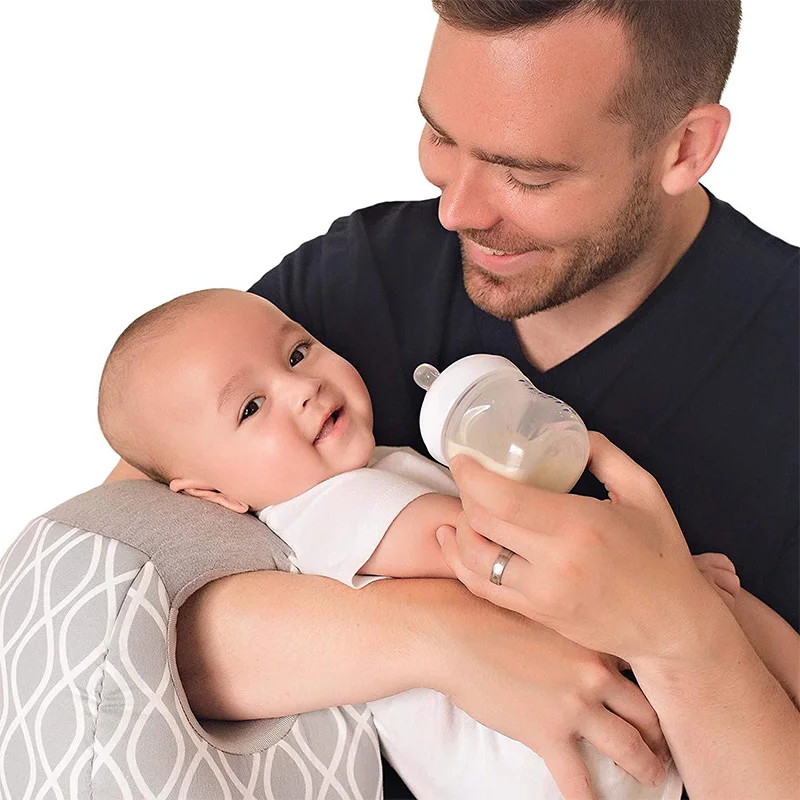
Reflux
Reflux can result in baby being fussy at the breast. See Reflux and Breastfeeding for more information.
Tongue-Tie
Tongue-Tie can result in baby being fussy at the breast. See Breastfeeding a Baby with Tongue-Tie (Resources) for more information.
Frequent problems during breastfeeding: doctor's advice
Breastfeeding is a simple and natural process that does not require special training, skill, skills ...
We can talk about the benefits of breast milk for babies for a very long time. Mother's milk is often called "white blood" because its composition and biological characteristics are as close as possible to the composition of placental blood, milk can carry nutrients and influence biochemical systems that increase immunity and destroy pathogenic microorganisms. In addition, breastfeeding is a process that allows you to establish the first contact between mother and child. For many mothers, these are happy moments of unity with the baby. But it is far from always possible to establish breastfeeding immediately and without problems. Often women experience difficulties that confuse, frighten and make them doubt the correctness of their own actions. Mammologist and breastfeeding specialist Anna Vanesyan talks about the most common problems faced by mothers who start breastfeeding. What to do if the baby fidgets at the chest? Should You Diet While Breastfeeding? And what if the baby has a tummy ache? The answers to these questions are in Anna Vanesyan's article.
For many mothers, these are happy moments of unity with the baby. But it is far from always possible to establish breastfeeding immediately and without problems. Often women experience difficulties that confuse, frighten and make them doubt the correctness of their own actions. Mammologist and breastfeeding specialist Anna Vanesyan talks about the most common problems faced by mothers who start breastfeeding. What to do if the baby fidgets at the chest? Should You Diet While Breastfeeding? And what if the baby has a tummy ache? The answers to these questions are in Anna Vanesyan's article.
First, the reasons depend on the age of the child . How old is the baby - a month, six months, a year? Secondly, at what stage of feeding does the baby begin to fidget - at the beginning, after 5 minutes, at the end?
If a completely newborn baby fidgets during the first month of life, it is likely that there are difficulties with grasping. The most important rule: make sure that not only the nipple, but the entire areola is in the mouth. There may also be problems with the bridle, but in this case, the baby should be examined by a specialist.
It is also very important to monitor the position of the child's body - the head and body should be located along the same line.
If the baby fidgets 5 minutes after the start of feeding, then, firstly, it is necessary to exclude the presence of mixed feeding. Children who have “tasted the bottle by mouth” understand that milk pours from a bottle into their mouths without much effort. And from the chest - only in the first 5 minutes. Next, you need to work. If there is no mixed feeding, then you need to look so that there are no beginning episodes of hypogalactia. At such moments, try to massage the breast from the periphery to the nipple with your free hand, try to lightly express milk into the baby’s mouth and thereby help.
If the child fidgets mainly at the end of feeding, in the evening hours, painfully leads to the stomach of the leg, screams piercingly, and he is 2. 5-4 months old, then these may be the first signs of colic.
5-4 months old, then these may be the first signs of colic.
What should I do if my breastfed baby has a tummy ache?
The first thing a compassionate mother does when she notices that her baby has a tummy ache, conducts a thorough inspection of her diet and begins to live on bread and water, so as not to provoke another bout of colic in her child. Excessive mother's stress and worries, of course, lead to adrenaline surges, which in turn reduces the level of prolactin and oxytocin - and so on in a circle.
With a balanced mother's diet, the quality of milk does not depend on the mother's food. But how the baby eats at the breast is very important.
It is pleasant to distinguish between the so-called foremilk and hindmilk. Foremilk is thin, watery and rich in sugars, mainly intended to quench the thirst of the baby. The hindmilk is thick, rich in nutrients, proteins and fats, and promotes the growth of the baby. If a mother often changes breasts during feeding or the baby has an incorrect grip, then he can spend a long time at the breast and eat only foremilk. As a result, the stomach is filled, and the child still remains hungry. A large amount of sugar also affects the stool, leading to diarrhea, indigestion, sour smell and greenish color.
As a result, the stomach is filled, and the child still remains hungry. A large amount of sugar also affects the stool, leading to diarrhea, indigestion, sour smell and greenish color.
Another reason why a baby may have a stomach ache is colic. If the stomach hurts between 1.5-4 months, mostly in the evening, the child presses the legs to the stomach and screams, it is likely that these are signs of colic. In general terms, all you need to know about colic: the child is not sick at this moment, this is just a stage of intestinal maturation, to which different children react differently, depending on the sensitivity. There are no effective treatments for colic, but remember that at these moments there is no need to breastfeed the baby (quite the contrary, the longer the break, the more chances he has to calmly digest the previous portion of milk). Skin-to-skin contact and abdominal massage have a positive effect, and as for drug treatment, it is better to consult a pediatrician individually.
Capture problems - what is the right way?
I repeated and repeat this every day: breastfeeding is a simple and natural process that does not require special training, skill, or skills. It is necessary to be able to relax in time and trust nature.
And the first and, undoubtedly, the most important step in this process is capture. A few simple principles for proper latch on:
1. Bring your baby to your breast, not the other way around. Moreover, if you carefully tickle the baby’s cheek or chin with the nipple, he will reflexively open his mouth wide and properly grasp the nipple.
2. With proper grip in the mouth, the child has not only the nipple, but also the areola - the areola.
3. If the baby fidgets at the breast, eats too fast and vigorously, then gets tired and falls asleep, then wakes up again and sucks vigorously - it is necessary to check the grip. Incorrect latch also leads to nipple cracks and sores, blockages and mastitis.
Breastfeeding / Breastfeeding / Useful information / Children's polyclinic / Departments of CDMC
Breastfeeding Guide
Mommy, your milk is always the way I want it: sometimes it is filled with the aroma of spring herbs, sometimes sweet like honey, sometimes light like dew, sometimes enveloping like white clouds. How many times it healed me and I became strong again, or wrapped me in a sweet slumber when I was very tired. At your chest, I heard the singing of a lark high in the sky, and the whisper of leaves in a birch grove, and autumn rain outside the window, and the chime of waxwings on a winter day.
Even after many years I will remember it, we will remember it...
E.Ibragimova
Published in the special issue of the magazine "Liza.My child" special issue 01/2016
Many mothers, expecting their first baby, seriously think about how childbirth will take place, and less often they think about how they will feed the baby. Meanwhile, childbirth is a very short period of time, and the rest of the life with the baby will be devoted to building relationships with him through breastfeeding.
Meanwhile, childbirth is a very short period of time, and the rest of the life with the baby will be devoted to building relationships with him through breastfeeding.
Some mothers-to-be are hesitant to breastfeed at all.
Let's look at their assumptions first:
- Does breastfeeding ruin breast shape?
Breast shape changes during pregnancy. On the contrary, when feeding for more than a year and smooth weaning, the breast acquires an almost “pre-pregnant” shape. According to studies, smoking has a stronger effect on the shape of the breast than feeding.
- Will it be impossible to leave the child?
For the first 3 months, short (1-1.5 hours) separations from the child are possible, from 3 months absence can be longer, after 9months, the mother can go to work full-time, leaving the baby with expressed milk.
- If the mother is nervous or very tired, does the milk “burn out” or become bad for the baby?
There are no conditions in the mammary gland for "burning out" of milk. When breastfeeding, endorphins are released into the blood of a woman, and HB helps her to endure stress more easily and is the best prevention of depression. Yes, and the child himself calms down at the breast, even if before that he sees the unusual behavior of his mother.
When breastfeeding, endorphins are released into the blood of a woman, and HB helps her to endure stress more easily and is the best prevention of depression. Yes, and the child himself calms down at the breast, even if before that he sees the unusual behavior of his mother.
- Is formula practically the same as breast milk?
In order for women to have such a doubt, manufacturers of infant formula have tried hard, investing millions of dollars in advertising and bribes.
Let's look at a few differences between breastfeeding and formula feeding:
|
| GW | Blend |
| Economy | free | about 100 tr. in the first year of a child's life. If hypoallergenic mixtures are required, then about 240 tr. |
| Number of substances | over 700! | 30- 50 |
| Stem cells | yes | no |
| Antibodies against diseases | yes | no |
| Growth factors for maturation of the intestines | enough | little |
| Effect of | normal maturation of the gastrointestinal tract, normal development of the immune system | constipation, diarrhea, increased risk of many diseases: allergies, gastrointestinal problems, various infections, diabetes, etc. |
| Proteins | easily absorbed whey
| hard to digest casein clots
|
| Change in composition | adapts to the needs of the baby (varies depending on the season, time of day, age of the baby, etc.) | composition is the same for all children |
| Vitamins and minerals | easily digestible | low absorption |
| Availability | no need to cook | it is necessary to go to shops, sterilize the bottle, dilute the formula with water, etc. |
| Excess substances | no | cases of salmonella infection, radioactive particles, etc. |
| Emotional connection between mother and child | strong | weak |
And the list of differences goes on.
Imagine, can a baby bottle with formula replace the happy moments at the mother's breast?
With information and help, almost any woman can successfully breastfeed for a long time. And you can!
What information can help you?
First , immediately after delivery (before measurements) skin-to-skin contact between the newborn and the mother (a method that involves placing the naked child on the mother’s abdomen or chest), the child must be dried, covered with a dry diaper, contact duration - at least 40 minutes, optimally 2 hours or more. (This right of mother and child is also enshrined in the Methodological Letter of the Ministry of Health and Social Development of the Russian Federation dated July 13, 2011 N 15-4 / 10 / 2-6796 "On the organization of the work of the obstetric service in the context of the introduction of modern perinatal technologies").
Why is this important:
a) At the same time, the baby's body is colonized by the same bacteria that live on the body of his mother. This, in combination with HB, is considered an important prevention of allergic diseases.
b) If a newborn is separated from his mother immediately after birth, he becomes vulnerable to aggressive hospital flora, the risk of nosocomial infections increases dramatically.
c) This calms the baby and mother, because they both experience great stress in childbirth.
d) The baby is more likely to be able to latch on correctly (especially if the birth was completed without medication).
Second , breastfeed within the first hour after birth. Don't panic if the baby doesn't take the breast right away. Children should eat when they show they are ready, and if the child is in close contact with the mother, she will notice this readiness. The recommended duration of application is at least 20 minutes from each breast.
The baby's first food should be colostrum. Colostrum is the secret of the mammary glands, which is produced during pregnancy and the first 3-5 days after childbirth (before milk arrives). It is a saturated thick liquid from light yellow to orange color. Do not be afraid that there is not enough colostrum. Colostrum is very concentrated, so the baby needs just drops.
Why it's important:
A) Colostrum contains several times more protein than mature milk, especially immunoglobulin A. Immunoglobulins are responsible for protecting the baby from infections and allergens, thanks to special mechanisms they are quickly absorbed in the baby's stomach and intestines.
B) It has laxative properties to help the baby quickly get rid of the original stool - meconium, and also reduces the risk of physiological jaundice in the baby.
C) The mother triggers the oxytocin reflex, which contributes to uterine contraction and faster recovery after childbirth.
Thirdly, the correct position of the baby at the breast and the correct attachment of to the breast. Let's dwell on the key points.
For example, you feed sitting. How to hold a baby:
a) The child's body and head are on the same line.
b) The baby's belly should be turned towards the mother's belly and touch it.
c) The WHOLE body of the child must be supported.
The baby is brought to the breast with the NOSE to the nipple so that it is necessary to reach for the breast. When he opens his mouth wide, we press the baby to ourselves.
If it is not possible to attach the baby well, gently insert the little finger into the corner of the mouth and open the gums, remove the breast.
What does proper attachment look like? The baby's mouth is open wide; lips turned out; his chin touches his mother's breasts; areola capture radius is 2-3 cm from the base of the nipple; except for swallowing, sniffing and even breathing, no other sounds are heard (smacking, etc. ); mom is not in pain.
); mom is not in pain.
There are many positions for feeding - sitting, lying down, close at hand, relaxed feeding, etc.
Nuance: good breast sucking is affected by the frenum under the tongue of the baby, ask the pediatrician at the maternity hospital to check it. If it turns out to be short, it is better to cut it immediately.
Fourth, frequent breastfeeding . The term “on demand” is commonly used, which confuses many moms. Many people think that a baby "demands" when it cries. At the same time, crying is the last thing a hungry child decides to do.
Signs of readiness to suckle in a newborn :
The baby's muscles tighten, for example, he clenched his fists and flexed his arms at the elbows.
The child rolls, twists and arches his back.
The child makes different sounds.
The child draws his hands to his mouth (even if his eyes are closed, he can suck his own hand).
If the child's hand is next to the face, he turns towards the hand, pokes, opens his mouth.
A newborn in the first 3 months of life may want to kiss 15-25 times a day. After all, his stomach is very small (on the 1st day after birth - 5-7 ml, on the 3rd day - 22-27 ml, on the 7th day - 45-60 ml) and breast milk is quickly absorbed. In addition to receiving nourishment, the child also finds comfort in his mother's breast. Therefore, it is not recommended to feed the baby "according to the regime" - for example, once every 3 hours or to limit his time at the breast - for example, to feed no more than 15 minutes. Night feedings are crucial for successful lactation - thanks to them, the level of prolactin is maintained at the required level.
Why frequent breastfeeding is important:
a) The number of prolactin receptors in the breast increases, which contributes to sufficient milk production in the future.
b) Promotes a more relaxed flow of milk, without pronounced symptoms of engorgement.
c) When feeding “according to the regimen”, there is a high risk that the child will be offended by the mother (after all, they do not immediately respond to his needs) and will behave restlessly at the breast.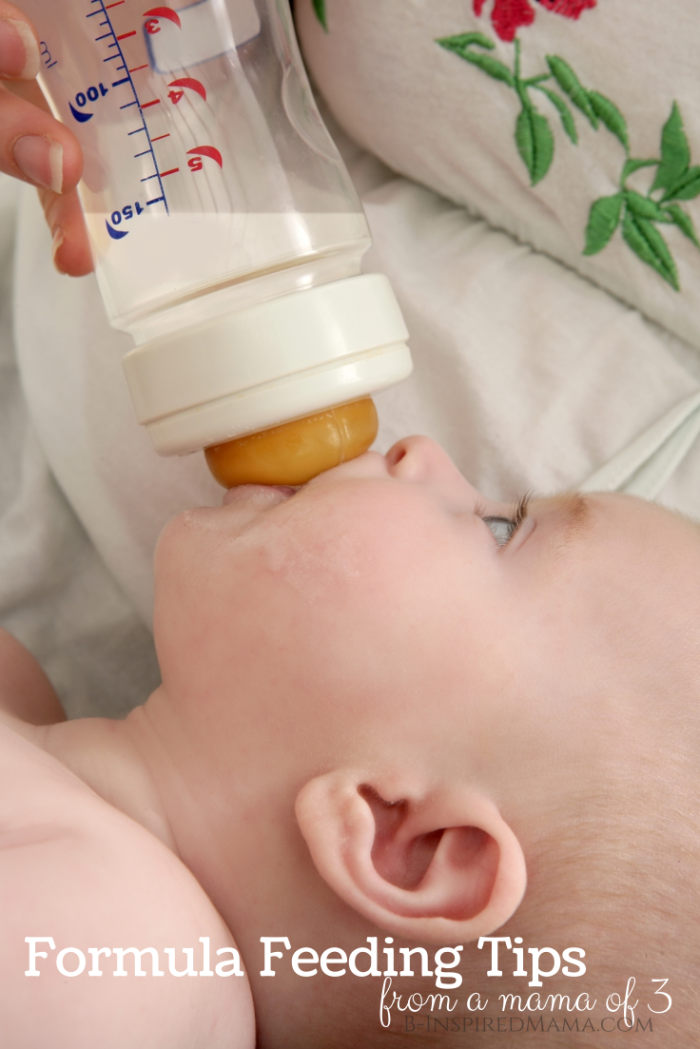
Fifth, it is not recommended to give pacifiers to the child.
Why it's important:
a) Soothers artificially delay feeding time, resulting in poor weight gain and reduced milk production.
b) The child finds solace not at the mother's breast, but in a silicone object and may refuse the breast.
c) It spoils the grip of the breast, which leads to cracks, lactostasis.
Sixth, if you need to supplement with expressed milk and/or formula, then avoid the use of bottles.
Why is this important:
A) The baby gets used to a strong and constant flow of milk from the bottle and begins to behave restlessly at the breast, "too lazy" to suck.
B) When sucking a bottle and a breast, different muscle groups are used, so the grip on the breast often deteriorates, the child sucks milk poorly, gains weight worse.
Seventh, the joint sleep of mother and child.
It is perfectly normal to sleep with your baby. A child should not be spoiled with attention or held too much in his arms. The more children are held in their arms, the more attention is paid to them, the better they grow. The presence of the mother, her smell, constantly encourages him to suckle the breast more often, which means sucking out more milk.
Western parents are advised to leave their child to "shout out" before going to bed in order to raise an independent child who is used to loneliness and is able to calm himself. However, modern research shows that in this case, the child's brain is irreparably damaged.
Safe sleep:
- The child should sleep on a clean and hard surface.
- Avoid sleeping with your baby if you are overly tired.
- Do not leave your baby unattended in an adult bed.
- In cold weather, cover yourself with several layers of thin bed linen instead of one thick layer.
- Pets must not be in bed
- No one should smoke in the room where the baby sleeps.

Now let's look at some common cases:
- Mother's Rh negative or blood group incompatibility is not a contraindication to breastfeeding. Rh-conflict, blood type conflict or hemolytic disease of the newborn is not a contraindication. Rh antibodies are destroyed in the gastric juice of the newborn. Studies also show that in children with hemolytic disease, HB does not increase the breakdown of erythrocytes, red blood cells.
- The administration of anti-Rh immunoglobulin to prevent Rh conflicts in subsequent pregnancies in an Rh-negative mother is not a contraindication to breastfeeding. Anti-Rhesus immunoglobulin almost does not penetrate into breast milk. Most immunoglobulins are destroyed in the gastric juice of the newborn.
- Is it possible to breastfeed with jaundice?
Even with severe physiological jaundice in children in the first days of life, it is impossible to refuse breastfeeding. Early attachment of the baby to the breast and frequent feedings are an important factor in the prevention of jaundice, since colostrum, having a laxative effect, leads to a faster discharge of meconium (original feces). With insufficient nutrition of a newborn child, jaundice may be more intense and prolonged due to the thickening of bile. (source - NATIONAL PROGRAM OF OPTIMIZATION OF FEEDING OF CHILDREN OF THE FIRST YEAR OF LIFE IN THE RUSSIAN FEDERATION, p.17).
With insufficient nutrition of a newborn child, jaundice may be more intense and prolonged due to the thickening of bile. (source - NATIONAL PROGRAM OF OPTIMIZATION OF FEEDING OF CHILDREN OF THE FIRST YEAR OF LIFE IN THE RUSSIAN FEDERATION, p.17).
It is absolutely pointless to give the child water, glucose, activated charcoal, smectite, etc. in such a situation. - from this, the activity of liver enzymes, the function of which is reduced, will not increase. In some cases, it may be necessary to carry out phototherapy with special lamps, which can usually be rented from the hospital home.
- What to do if you are separated from your child?
It is recommended to express at least eight times a day. Whether you can pump something or not, breast stimulation is important to maintain and increase your milk supply.
If there is no joint stay in the maternity hospital, or if the baby was taken to the children's department for some medical reasons - do not hesitate to visit him and feed him there! If your and his condition allows, try to feed the baby only colostrum and then breast milk.
Try not to give supplements from a bottle, but from a spoon, pipette or syringe without a needle.
"Arrival" of milk.
Milk comes on 3-4 days after childbirth, less often - on 5-7. Your chest becomes hot, heavy, tight. If the mother rarely put the baby to the breast before, then engorgement may occur. At the same time, remember that you can do without pain and rough straining. Act according to the scheme: heat - light massage - removal of swelling from the areola - decant a little - attach the child - cold compress.
"Hard" straining, which is often used in the hospital, leads to severe swelling and worsening of the situation. Alcohol compresses, Vishnevsky ointment, etc. are not recommended.
How to remove swelling from the areola? Use the Pressure Softening technique introduced by international consultant Jean Kotterman.
It is necessary to evenly and gently press on the areola towards the chest and hold the pressure for at least a full minute (up to 2-3 minutes).
How to express properly? Fingers are placed on the border of the areola and white skin. First, the fingers are pressed in the direction of the chest: you seem to grab the milk-filled ducts that lie under the areola, and only then roll over them with your fingers. Important: the fingers do not fidget over the skin, they stand in one place on it.
How do you know if your baby is getting enough milk?
Newborns lose up to 6-10% of their birth weight in the first two days of their lives. This is a physiological norm. Most children regain their weight or begin to put on weight by 5-7 days of life.
- Wet Diaper Test .
Urination rate (per day) for a child up to 10 days old = number of days + 1.
That is, for example, a 2-day-old baby who has enough milk pees 3 times a day.
Babies over 10 days of age should write 12 or more times a day.
These calculations are correct if there is no water addition and no drips.
- Weight set . The rate of weight gain for babies in the first 6 months of life is from 500 to 2000 g per month.
The set is not calculated from birth weight, but from the minimum (usually this is discharge weight). If the weight gain is less than 150g per week, we advise you to contact the AKEV specialists and the pediatrician.
- An infant should have at least 3-4 bowel movements per day (up to about 3-6 weeks). Then the chair is reduced - up to 1 time per day or less.
All other signs - baby crying, little pumping from the breast, no milk leakage, etc. - are not reliable signs of milk sufficiency / lack of milk .
Breastfeeding mother's lifestyle:
- Care: it is recommended to wash breasts 1-2 times a day while taking a shared shower (just water, no soap).
- Diet: you should not sit on a "dry ration", the menu should be varied and healthy (without the use of chemical additives), eat according to your appetite.





